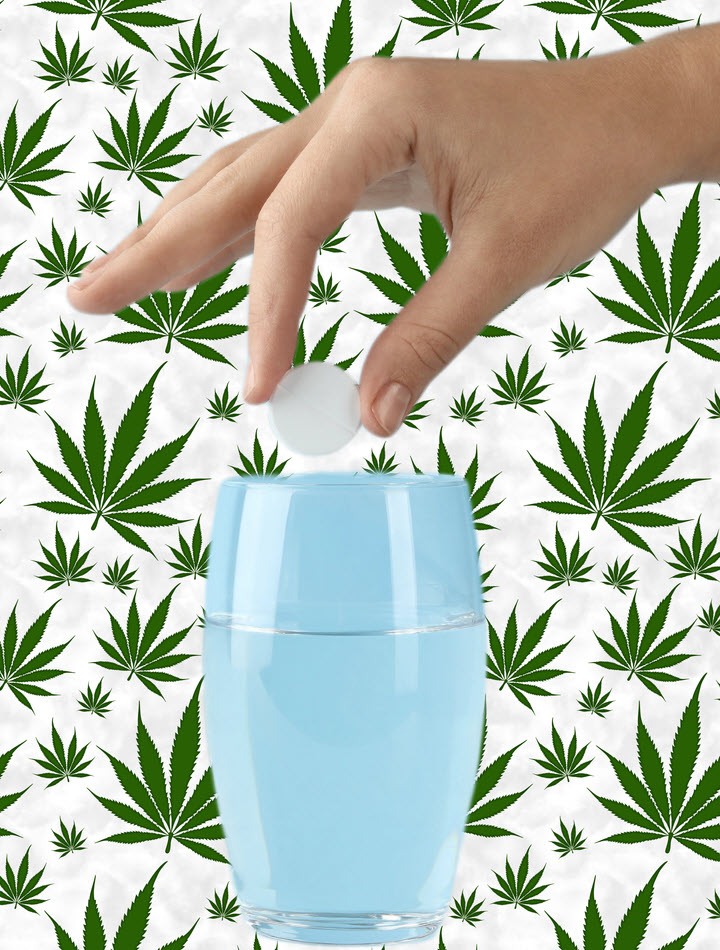
Should You Really Be Worried About Schizophrenia and Psychosis If You Smoke Weed?
Occasionally, a study on cannabis and schizophrenia or psychosis makes its way to the internet and becomes viral for a few weeks. It gets republished and circulated across numerous news channels and social media sites, spreading often unnecessarily alarming news and fear-mongering.
So what’s the truth behind it? Should you really worry about developing schizophrenia and psychosis if you smoke weed?
Let’s get the facts sorted first.
Schizophrenia
Schizophrenia is a chronic mental health disorder characterized by hallucinations, delusions, cognitive distortion, trouble thinking straight, and lack of motivation. Extreme cases of schizophrenia can also lead to episodes of psychosis or delusion, which is what occurs when an individual can no longer tell the difference between reality and fiction. Being severely disconnected from reality can occur among patients of schizophrenia and psychosis, but these can be caused by a wide range of physical or mental conditions.
What Causes Schizophrenia?
There is no one known cause for schizophrenia, though several environmental and genetic factors can contribute to its symptoms. It’s also known to run in families, so if someone in your family tree has had schizophrenia, it’s important to practice caution when using drugs and alcohol.
Certain environmental triggers can cause psychotic or schizophrenic episodes, particularly going through extremely stressful life events. Stressful environments, such as fast-paced cities, may also trigger symptoms. Other factors include the experience of childhood trauma, or certain changes in brain chemistry.
Cannabis: Treatment Or Cause?
The symptoms of schizophrenia can be managed or reduced through the use of antipsychotic medications, which are typically the first line of defense for this condition. First-generation antipsychotics, such as Chlorpromazine, Perphenazine, and Fluphenazine, are examples of widely-used schizophrenia treatments. Second-generation antipsychotic treatments include Aripiprazole, Lurasidone, Clozapine, Quetiapine, and several others. In some occasions, doctors may also prescribe antidepressants if antipsychotic drugs don’t help with the depressive episodes that may be associated with schizophrenia.
However, many antipsychotic medications come with unwanted side effects. They commonly include sexual dysfunction, weight gain, sedation, heart problems, difficulty urinating, and many more.
The use of cannabis-based medications for treating the symptoms of schizophrenia has been gaining traction in the medical and scientific community over the past few years. That said, we must differentiate the compounds used in cannabis because we can’t generalize all the compounds in the plant and its effects on the human body. Tetrahydrocannabinol (THC), the psychoactive compound in marijuana, and cannabidiol (CBD), a relaxing, non-psychoactive compound, both work differently in the human body.
What The Research Says
Several studies have shown that CBD could be promising for treating and even mitigating the symptoms of schizophrenia and psychosis. This is especially true if the condition is in its early stages.
For example, in a review conducted in 2021, scientists found that CBD may be beneficial in adjusting the levels of different brain chemicals which have been associated with symptoms of psychosis. One of these is anandamide – and the study found that CBD can increase its levels in the brain.
Anandamide is an endocannabinoid, and it’s believed to help reduce psychotic episodes through several mechanisms in the brain. For one, high levels of anandamide have been observed as successful in mitigating acute cases of schizophrenia.
Meanwhile, another review discovered minor albeit significant evidence that CBD could possibly reduce the symptoms of schizophrenia when administered in high doses. In the review, the researchers noted that 800 mg of CBD were given to patients over the course of 4 weeks. The results were similar to those yielded by amisulpride, an antipsychotic drug which is used in the treatment of psychosis. A similar trial found that 1,000 mg of CBD given to patients over 6 weeks was effective in reducing schizophrenia symptoms.
The results of a 2024 clinical trial also found that CBD was successful in mitigating the symptoms of patients who were at high risk for psychosis. For the study, there were 31 patients involved; they were given either 600 mg of CBD or a placebo everyday for 3 weeks. However, they weren’t given any prescription drugs during the course of the study. Researchers analyzed their baseline at 7 and then again at 21 days.
“Short-term treatment with CBD can ameliorate the symptoms of CHR state for psychosis and is well tolerated. These results highlight the potential of CBD as a novel treatment for psychosis, and the need for large-scale efficacy studies to further evaluate its clinical utility,” concluded the study’s authors.
So Who Needs To Worry About Schizophrenia and Cannabis Use?
Smoking pot won’t make you go psychotic. It doesn’t cause schizophrenia per se.
That said, those with pre-existing mental health conditions must tread lightly and be very cautious when it comes to using high THC products. In other words, if you already have a family history of schizophrenia or have had a history of psychotic episodes, THC may not be the medicine or recreational drug for you. Individuals with bipolar disorder, delusional disorder, or other similar personality and mood disorders with a tendency to have episodes of psychosis should first seek out medical attention.
Products containing high levels of THC may not be recommended in these situations, though CBD may help reduce symptoms. If you aren’t sure, it’s always best to consult with your medical provider.
Conclusion
Even if there is promising evidence that CBD can be beneficial for schizophrenia, we must be careful not to consider it as a substitute for any kind of medical treatment. There are many different types of cannabis products out there but there isn’t one-size-fits-all solution for mental health disorders. So while most people wouldn’t have a problem smoking weed, there is a small subset of the population as mentioned earlier – who do have to be careful.
PSYCHOSIS AND WEED, WHAT WE KNOW…

NO INCREASE IN PSYCHOSIS WITH LEGALIZATION NEW STUDY FINDS!


 One-Hit Wonders2 years ago
One-Hit Wonders2 years ago
 Cannabis 1012 years ago
Cannabis 1012 years ago
 drug testing1 year ago
drug testing1 year ago
 Education2 years ago
Education2 years ago
 Cannabis2 years ago
Cannabis2 years ago
 Marijuana Business Daily2 years ago
Marijuana Business Daily2 years ago
 California2 years ago
California2 years ago
 Uncategorized2 years ago
Uncategorized2 years ago























